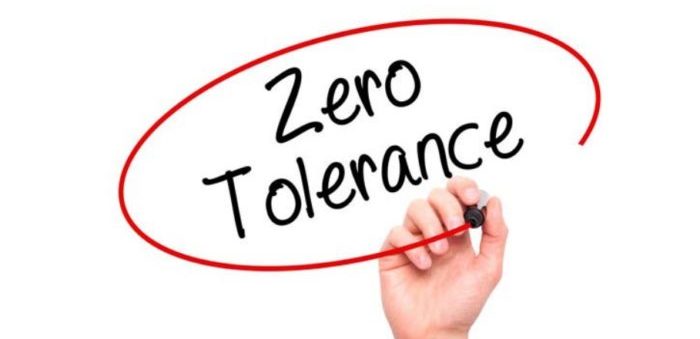By: Wade Poziomka, Paul Champ & David Baker
Last week, the Supreme Court of Canada issued its decision in Northern Regional Health Authority v. Horrocks, 2021 SCC 423. Since its release, some commentary on this decision has claimed that the jurisdiction of human rights tribunals is ousted in favour of labour arbitrators with respect to unionized employees.
While this may be the case for unionized employees in Manitoba, a careful review of this decision indicates this is likely not the case in other jurisdictions, including Ontario. The Court held that the mere existence of a competing tribunal is insufficient to displace labour arbitration as the sole forum for disputes arising out of collective agreement, but it specifically recognized that an expression of legislative intent can still confer concurrent jurisdiction. Ideally this intent should be explicitly stated, however even absent specific language, the statutory scheme may disclose that intention. This is found at paragraph 33 of the decision, wherein the Court lists some statutory provisions by way of example. The Court said,
[T]he mere existence of a competing tribunal is insufficient to displace labour arbitration as the sole forum for disputes arising from a collective agreement. Consequently, some positive expression of the legislature’s will is necessary to achieve that effect. Ideally, where a legislature intends concurrent jurisdiction, it will specifically so state in the tribunal’s enabling statute. But even absent specific language, the statutory scheme may disclose that intention. For example, some statutes specifically empower a decision-maker to defer consideration of a complaint if it capable of being dealt with through the grievance process (see, e.g., Human Rights Code, R.S.B.C. 1996, c. 210, s.25; Canada Labour Code, ss. 16(1.1) and 98(3), Canadian Human Rights Act, R.S.C. 1985, c. H-6, ss 41 and 42). Such provisions necessarily imply that the tribunal has concurrent jurisdiction over disputes that are also subject to the grievance process.
The key difference between the Manitoba legislation and human rights statutes in other jurisdictions is the existence of an explicit ‘deferral to another proceeding’ provision. This is highlighted by Justice Karakatsanis’ dissent in Horrocks. The main point of departure for Justice Karakatsanis was her view that section 29(3) of the Manitoba Human Rights Code could and should be broadly interpreted as a “deferral” provision, signaling legislative intent to confer concurrent jurisdiction, even though it did not use same “deferral” language as other statutes. Justice Karakatsanis found in paragraphs 118-119 of the decision that section 29(3) of the Manitoba Code may be “less explicit than the deferral clauses found in Ontario, British Columbia, and the CHRA”, but that it should be interpreted in the same way. Obviously, and unfortunately for victims of discrimination in Manitoba, the majority of the Court did not agree.
Prior to the Horrocks decision, it was widely accepted in Ontario that the Human Rights Tribunal of Ontario had concurrent jurisdiction with labour arbitrators for human rights disputes arising out of unionized workplaces. To suggest that has changed post-Horrocks, in our view, is simply wrong.
Like the statutes and sections referred to by the majority, and as expressly referenced in the dissent, the Ontario Human Rights Code has a provision which specifically contemplates the deferral of an application. Sections 45 and 45.1 state:
The Tribunal may defer an application in accordance with the Tribunal rules.
The Tribunal may dismiss an application, in whole or in part, in accordance with its rules if the Tribunal is of the opinion that another proceeding has appropriately dealt with the substance of the application..
In our view, the statutory scheme for human rights in Ontario demonstrates legislative intent of concurrent jurisdiction. Most significantly, the Ontario Court of Appeal in Ontario (Human Rights Commission) v Naraine, 2001 CanLII 21234, (2001), 209 DLR (4th) 465 (ON CA) held that the Ontario legislature intended to confer concurrent jurisdiction over human rights matters on labour arbitrators and the human rights tribunal. Referring to the deferral provision in the Ontario Human Rights Code at the time as contemplating concurrency through “synchronized discretion” with labour arbitrators, the Court of Appeal observed that this was evidently the legislature’s intent. The Court of Appeal highlighted the policy reasons behind concurrency, observing that “there may be circumstances where an individual unionized employee finds the arbitral process foreclosed, since the decision whether to proceed with a grievance is the union’s and not the employee’s.” The Court of Appeal added that assigning exclusive jurisdiction to labour arbitrators in Ontario could “render chimerical the rights of individual unionized employees.”
We pause to note that the Ontario Court of Appeal’s judgment in Naraine was written by Abella J.A., as she then was, before she was elevated to the Supreme Court of Canada. Since Justice Abella joined in the majority decision in Horrocks written by Justice Brown, it must be assumed that Abella J was not agreeing to overturn herself in Naraine.
Human rights are quasi-constitutional rights belonging to individuals. Should the Human Rights Tribunal of Ontario interpret Horrocks to deny persons in Ontario access to the Tribunal to seek redress for alleged human rights violations, that would effectively strip the individualized nature of these rights from unionized employees.
Grievances are owned by unions, not individuals. Unions can choose whether or not to advance a grievance for a number of reasons, and even when a grievance is advanced, can decide whether to include allegations of human rights breaches or not. The individual has little control over that process, short of the ability to file a complaint against a union for unfair representation. While some unfamiliar with labour law may believe that this is a legitimate option, in practicality, very few unfair representation complaints have been successful because the case law in that area has afforded unions broad discretion in when to advance grievances with very few exceptions.
While unions may have good reason not to advance a grievance where there are legitimate human rights issues at play, we must also recognize that the quasi-constitutional nature of human rights should also afford individuals to be permitted to have those allegations determined by an expert human rights body – the Human Rights Tribunal of Ontario.
While Horrocks may appear definitive at first glance, a careful reading indicates that it has not changed the legal status quo in other provinces.

